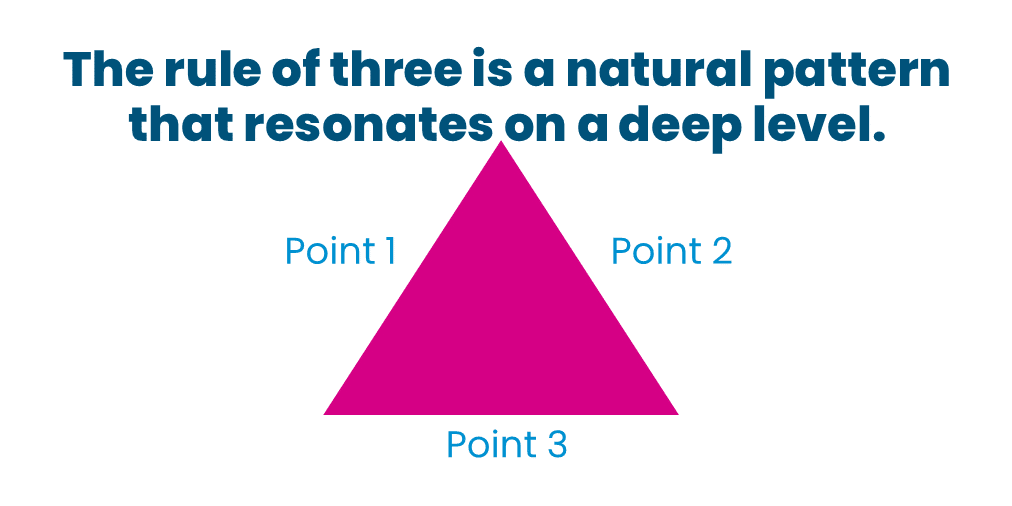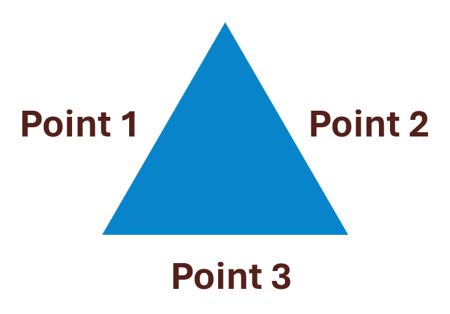
Think in threes
Last week I attended a gathering of wealth managers and gave a brief presentation with suggestions on building personal brands. The point that resonated most was “thinking in threes.” This is an idea we apply regularly in our message-triangle approach to preparing for media interviews. It’s also helpful whenever you need to keep in mind key ideas you want to share.
The benefits of “thinking in threes” are evident. Say you’re a wealth manager preparing for a conversation with an estate attorney from whom you hope to receive business referrals. What do you want the attorney to remember? What will set you apart from all the financial advisors asking for a conversation?
- For you, the benefit of thinking in threes is remembering your points in conversation. It’s much easier to remember and find conversational bridges to three things than four or more.
- For the estate attorney, the benefit is salience—because by limiting yourself to three key ideas, you’ve forced yourself to narrow your message to what the attorney cares about.
Consider a simple triangle graphic with a written message along each side:

Now imagine the triangle as the seat of a three-legged stool. As we all know, a three-legged stool is sturdier than a four-legged stool on anything but the flattest ground.

A music teacher once told me: the world comes in twos and threes. She was referring to rhythm, but her point applies broadly:
- The triad musical chord
- The basic forms of matter (solid, liquid, gas)
- The fundamental principles of life (birth, life, death)
- The triplet structure nucleotides in DNA
- The producer-consumer-decomposer functions of ecosystems
The “think in threes” approach is elegant not only for its simplicity but for its harmony with nature. Here are some more examples, now turning to social and business realms:
- In rhetoric, the “rule of three” holds that arguing three points heightens persuasion.
- In accounting, we have three basic financial statements: balance sheet, income statement and statement of cash flows.
- In personal development, people often talk about physical, mental and spiritual health.
In strategic planning, businesses often focus on three core areas—such as customer satisfaction, operational efficiency, and innovation—to drive growth. - In investing, some use the rule of three in investment selection processes (e.g., screen / analyze / construct) or in allocation decisions (e.g., stocks / bonds / cash).
Let’s revisit the example of a wealth manager preparing to talk with a COI. If you find three salient points that connect to your value proposition and matter to the COI, you will improve the chances of making yourself memorable in the uneven landscape of competitive professional services.
Additionally, the reference to nature, music, and even fundamental scientific principles emphasizes that the rule of three is not just a communication strategy but a natural pattern that resonates on a deeper level. From the harmony of a triad chord to the balance of ecosystems and the structure of our very DNA, the rule of three permeates every aspect of our existence.
As for my presentation, I learned a few hours later that one of the wealth managers had already made a message triangle. Sometimes the simplest messages are the most helpful.
Lowe Group offers a range of media relations services. To learn more, send us a note and we’ll follow up.
Subscribe.
Receive the latest news and insights from Lowe Group.